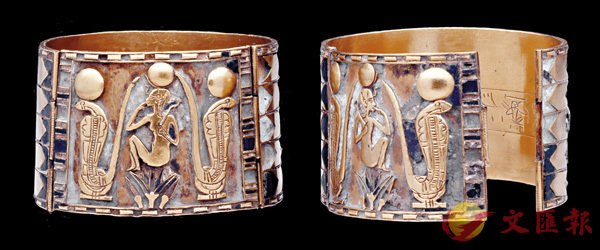
尼姆洛手鐲 Bracelets of Nimlot
第二十二王朝,舍順克一世在位期間(約公元前940年)
22nd Dynasty reign of Sheshonq I (about 940 BC)
這對華麗的手鐲本來鑲有青金石(一種由阿富汗進口的半寶石)。手鐲上顯示一個小孩坐在象徵創造的蓮花上。荷露斯神以兒童的形態出現,頭上有彎月和圓盤,額前是聖蛇(上半身竪起的眼鏡蛇)。這對手鐲屬於一位名叫尼姆洛的王子。
圖像由大英博物館託管會提供。
These exquisite cuff-bracelets were originally inlaid with lapis lazuli (a semi-precious stone imported from Afghanistan). The scene shows a child seated on a lotus flower, a symbol of creation. The god Horus the Child is shown with a lunar crescent and a disk on top of his head, as well as the uraeus (rearing cobra) on his forehead. These bracelets belonged to a prince called Nimlot.
Images in courtesy of the Trustees of the British Museum.
■資料提供︰香港科學館 Hong Kong Science Museum
■展期:即日至2017年10月18日
逢星期三見報

